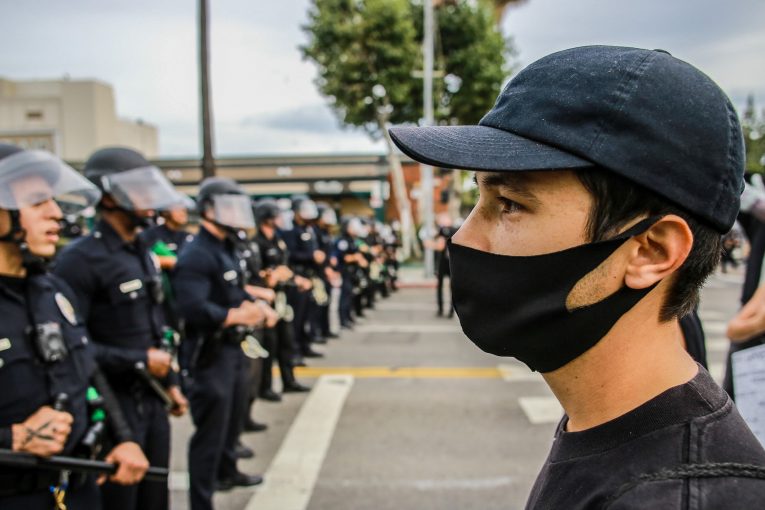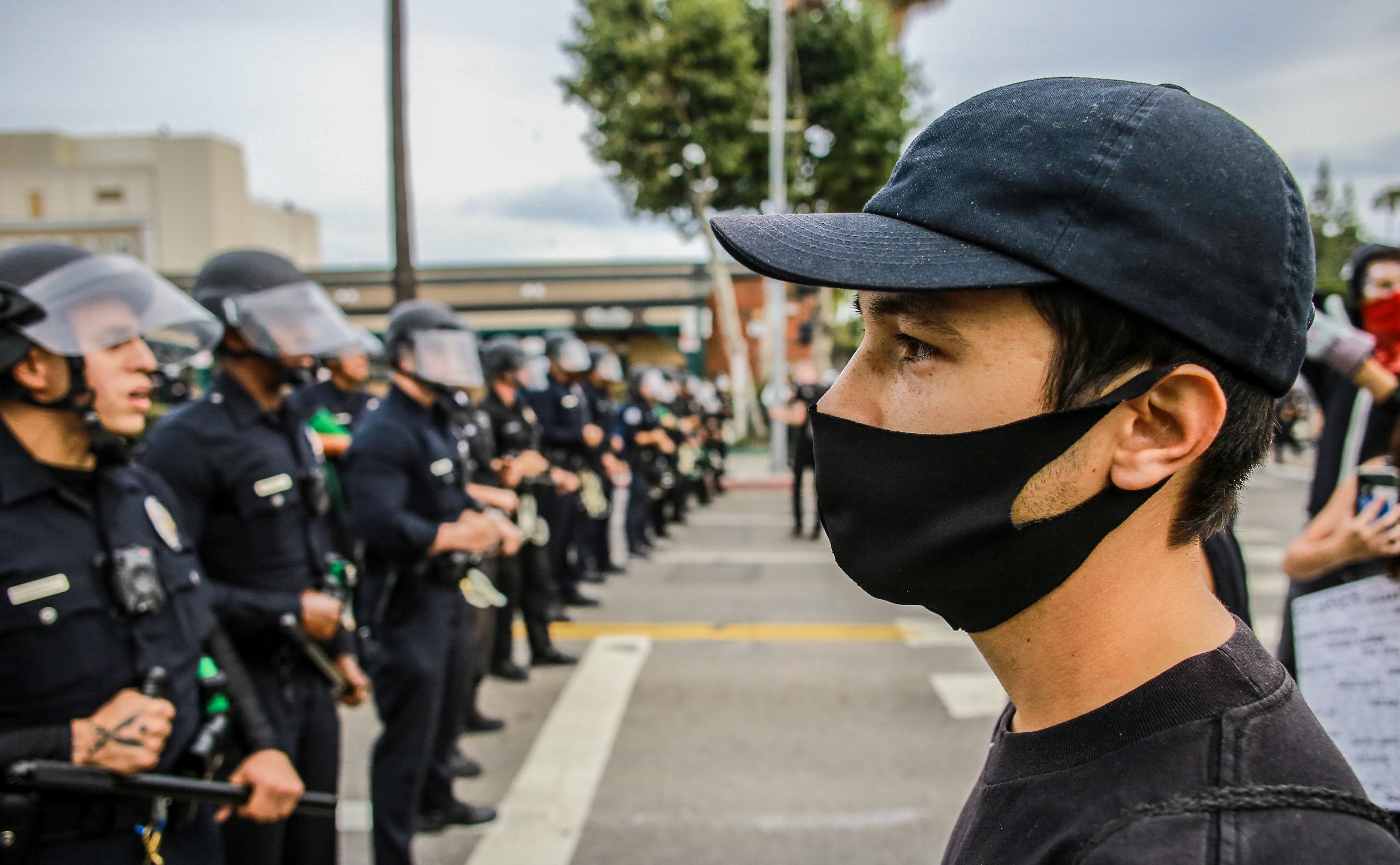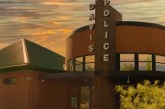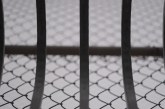

By Linh Nguyen
LOS ANGELES COUNTY– The ACLU of Southern California is asking for the curfew order that came about from the Black Lives Matter movement protests to be rescinded because of its unlawfulness, according to an email to the Chair of the Los Angeles County Board of Supervisors.
The death of George Floyd on May 25, 2020, sparked non-stop protests across the globe demanding an end to police brutality (particularly racially motivated acts) and institutionalized racism.
These protests often began as peaceful until police forces violently aggravated protestors, according to organizers. The aftermath of some protests ended in riots, looting and destruction of city area.
In response, some local governments ordered a curfew to maintain order and “protect public safety,” taking effect as early as 8 p.m. and lasting until 5 a.m. In LA County, the curfew begins at 9 p.m. and lasts until 5 a.m.
However, cities can implement stricter curfews based on their local needs. In Santa Monica and Culver City, the curfew begins at 6 p.m. In Beverly Hills, the citywide curfew begins at 4 p.m. Those in violation of the curfew may be arrested and fined up to $10,000.
According to the LA County, “The countywide curfew does not apply to the following: peace officers; firefighters; National Guard or other military personnel deployed to the area; emergency medical services personnel; individuals traveling to and from work; individuals working on a public work of improvement construction project; credentialed media representatives involved in news gathering; people experiencing homelessness and without access to a viable shelter; and individuals seeking medical treatment.”
Formally representing public enragement with the unfairness of the curfew order, Ahilan Arulanantham, Senior Counsel of the ACLU of Southern California, wrote to Kathryn Barger, Chair of the Los Angeles County Board of Supervisors, to rescind or “substantially restrict” the curfew order.
“The Order in its present form is neither authorized by state statutory law nor consistent with the United States Constitution, including the Constitution’s prohibition on restrictions of speech and assembly, its protection for the freedom of movement, and its most basic notice requirements,” said Arulanantham.
“We recognize that in the last few days some individuals have damaged and stolen property in areas where many others have engaged in peaceful protests, but that unlawful conduct cannot justify a state of emergency in the entire county that effectively places over 10 million people under house arrest for twelve hours every evening and morning. The Constitution does not permit the County to order such a  sweeping restriction on free speech and travel across a county of 10 million people to address a few localized attacks on property.”
sweeping restriction on free speech and travel across a county of 10 million people to address a few localized attacks on property.”
The curfew order, he said, exceeds the State’s authority under Government Code section 8634, which gives the state and its subdivisions the authority to order a curfew to address a genuine “local emergency.” According to the first clause of the curfew order, the order was implemented in response to threats to persons and property arising from “civil unrest in the County.”
Arulanantham argues that because protesters in Southern California have threatened no person’s life and damage to property occurred only in commercial districts in a few isolated regions, it is unjust to apply the curfew to the entirety of Los Angeles County, which spans 4,751 square miles and lives 10 million residents. Furthermore, there were no protests in numerous regions within the county, he maintains.
“While it is conceivable that a ‘local emergency’ could encompass all of LA County — such as perhaps after a severe earthquake — protests or damage to property in a few isolated locales do not give rise to an emergency in the entire County,” Arulanantham argued.
He said the curfew order also violates the First Amendment because it restricts free speech by entirely suppressing all demonstrations occurring after 6 p.m.. and in contrast, the Order suggests, in Clause 4, that this restriction is unlawful because it has become “especially difficult” to protect public safety and property “during darkness and in the hours approaching darkness.”
Arulanantham offers that the County might believe the order is lawful because it still allows for protest during daylight hours.
The letter said that a community’s right to protest day or night can not be infringed on because some people have acted unlawfully in certain areas. Even in those areas, the First Amendment generally requires the state to punish those who break the law rather than suppress everyone’s protected speech. This was decided in the 1996 case of Collins v. Jordan:
“The generally accepted way of dealing with unlawful conduct that may be intertwined with First Amendment activity is to punish it after it occurs, rather than to prevent the First Amendment activity from occurring in order to obviate the possible unlawful conduct…. The law is clear that First Amendment activity may not be banned simply because prior similar activity led to or involved instances of violence…. Banning or postponing legitimate expressive activity because other First Amendment activity regarding the same subject has resulted in violence deprives citizens of their right to demonstrate in a timely and effective fashion,” the decision said.
Believing that the order is lawful because it still allows for protest during daylight hours is also problematic because it does not account for those who are unable to protest during work hours. To satisfy First Amendment requirements, a curfew must both be narrowly tailored and allow for ample alternative channels of communication.
Arulanantham argued that the order fails narrow tailoring because of its “extraordinary geographic scope” and because it “restricts more speech than necessary to achieve its aim.
“Because ‘there are a number of feasible, readily identifiable, and less-restrictive means of addressing’ the County’s interests, the Order is ‘not narrowly tailored’ to serve those interests,” the letter said. According to Arulanantham, these other means may include enforcing criminal laws prohibiting damage to property and unlawful assembly (though the latter is “if necessary as a last resort in narrowly defined circumstances”).
The letter offers a quote from the 1989 case of Texas v. Johnson:
“[The] principle function of free speech under our system of government is to invite dispute. It may indeed best serve its high purpose when it induces a condition of unrest, creates dissatisfaction with conditions as they are, or even stirs people to anger.”
The curfew order also violates the Constitution’s protection for the freedom of movement. Because the order applies to all kinds of movement, including those that cannot be mistaken for causing property damage, people also cannot walk with their children or dogs, jog or bike for exercise, go to the grocery store or travel for family caregiving obligations, to name a few examples. Furthermore, though the order targets the hours “approaching darkness,” setting the curfew at 6 p.m. (as some cities have declared), two hours before sunset, it makes it difficult for most working people to attend to basic necessities outside their homes. The residents of LA County are subject to 12 hours under house arrest.
“The Constitution does not permit such a draconian deprivation of liberty under these circumstances,” he said.
Lastly, Arulanantham argued that the curfew order contains insufficient notice because it does not contain a provision requiring authorities to notify individuals prior to enforcing the Order and it was imposed without sufficient advance notice for all those subject to its restrictions. This is a violation of the Fifth and Fourteenth Amendment rights of due process.
The County imposed the first day’s curfew 90 minutes before it went into effect and the notice for the second day’s curfew was only a few hours in advance.
“Common sense, as well as the Constitution’s most basic commands, require that County residents receive more time before they are effectively imprisoned in their own homes for the entire evening and night,” Arulanantham said.
Because the curfew order set in LA County exceeded the State’s authority, violated the First Amendment, violated the freedom of movement, and did not give sufficient notice, Arulanantham formally requested, on behalf of the the residents of the County, that the Board of Supervisors rescind or restrict the curfew order.
To sign up for our new newsletter – Everyday Injustice – https://tinyurl.com/yyultcf9





